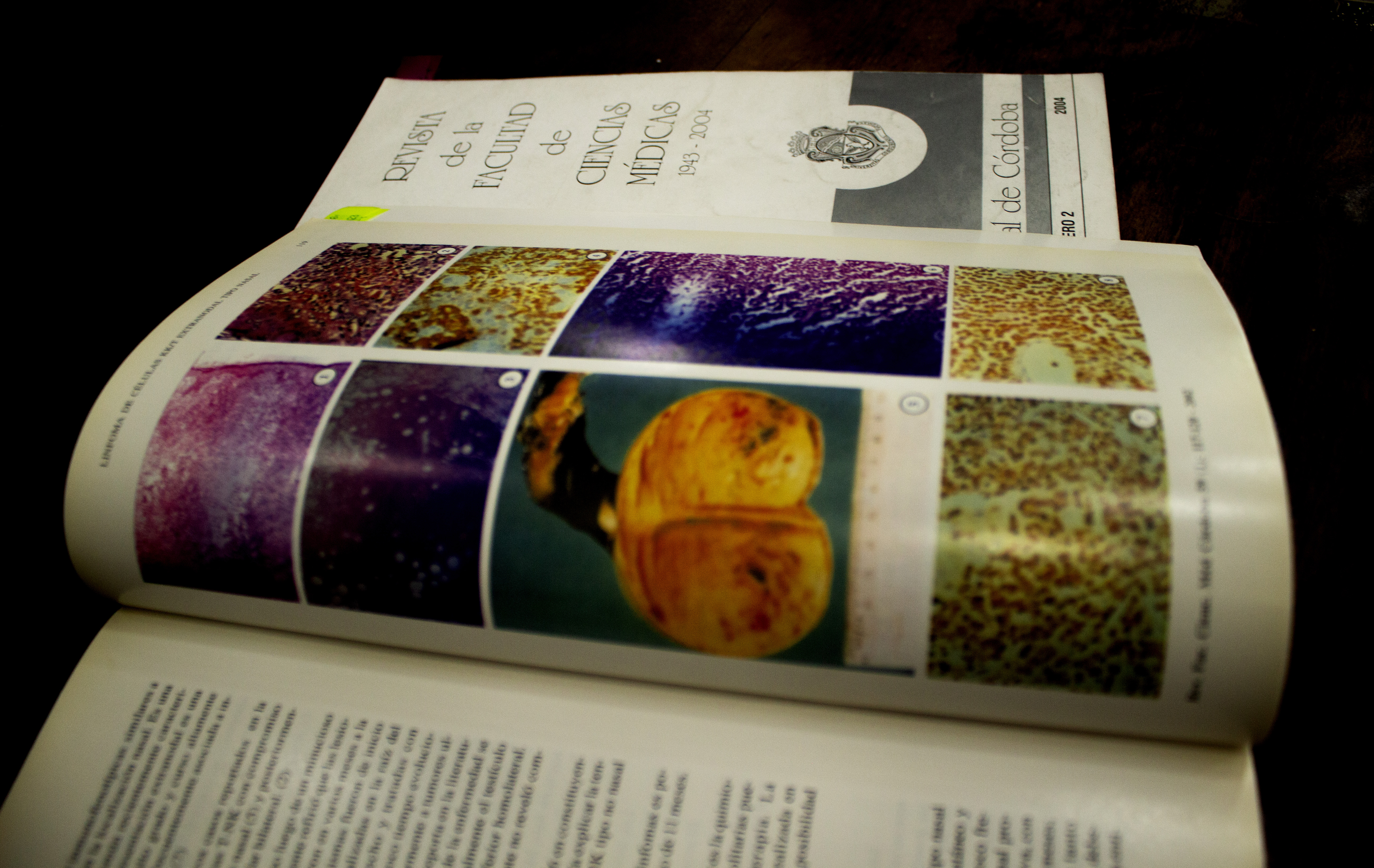Medullary infarction secondary to endovascular treatment of thoracoabdominal aortic aneurysm
A case report
DOI:
https://doi.org/10.31053/1853.0605.v81.n1.41439Keywords:
spinal cord, spinal cord diseases, spinal cord ischemia, paraparesis, aortic aneurysmAbstract
Introduction. Medullary infarction is a severe and infrequent pathology, which represents 1% of all ischemic strokes, and is also a rare complication of different surgical procedures. It is caused by the acute interruption of the blood flow of the spinal cord, manifesting itself with clinical neurological deficits related to the affected vascular territory.
Methods. We present the case of an 80-year-old patient, with cardiovascular risk factors, who is present on post-surgical day 13, after placement of a vascular endoprosthesis for a thoracoabdominal aneurysm, sudden appearance of paraparesis with progression to paraplegia and hypoesthesia in both lower extremities. CT angiography of the aorta rules out local complications in the endoprosthesis. Medullary MRI showed images compatible with acute dorsal medullary infarction from level D9.
Results. On discharge, the patient presented paraplegia and hypoesthesia of both lower extremities with fecal and urinary incontinence.
Conclusión. Spinal cord infarction may be limited to a vascular territory or be more extensive according to its pathogenesis. The affectation of the anterior spinal artery is the most common and is characterized by bilateral motor deficits and loss of thermoalgesic sensitivity, which could have a great impact on the quality of life of patients. Its etiology is varied, including aortic surgery within its causes. MRI is very useful for its diagnosis and currently there are no clinical guides for the optimal treatment.
Downloads
References
1. Ros Castelló V, Sánchez Sánchez A, Natera Villalba E, Gómez López A, Parra P, Rodríguez Jorge F, Buisán Catevilla J, García Barragán N, Masjuan J, Corral I. Infarto medular: etiología, hallazgos radiológicos y factores pronósticos en una serie de 41 pacientes. Neurologia. 2021 Feb 10:S0213-4853(21)00002-5. doi: 10.1016/j.nrl.2020.11.014.
2. Romi F, Naess H. Spinal Cord Infarction in Clinical Neurology: A Review of Characteristics and Long-Term Prognosis in Comparison to Cerebral Infarction. Eur Neurol. 2016;76(3-4):95-98. doi: 10.1159/000446700.
3. Vargas MI, Gariani J, Sztajzel R, Barnaure-Nachbar I, Delattre BM, Lovblad KO, Dietemann JL. Spinal cord ischemia: practical imaging tips, pearls, and pitfalls. AJNR Am J Neuroradiol. 2015 May;36(5):825-30. doi: 10.3174/ajnr.A4118.
4. Naik A, Moawad CM, Houser SL, Kesavadas TK, Arnold PM. Iatrogenic spinal cord ischemia: A patient level meta-analysis of 74 case reports and series. N Am Spine Soc J. 2021 Sep 28;8:100080. doi: 10.1016/j.xnsj.2021.100080.
5. Pigna F, Lana S, Bellini C, Bonfanti L, Creta M, Cervellin G. Spinal cord infarction. A case report and narrative review. Acta Biomed. 2021 Apr 30;92(S1):e2021080. doi: 10.23750/abm.v92iS1.8395.
6. Novy J. Spinal cord syndromes. Front Neurol Neurosci. 2012;30:195-8. doi: 10.1159/000333682.
7. Carmona P, Mateo E, Otero M, Marqués JI, Peña JJ, Llagunes J, Aguar F, De Andrés J. Protección medular en la cirugía abierta y endovascular de las enfermedades de la aorta torácica y toracoabdominal. Rev Esp Anestesiol Reanim. 2011 Feb;58(2):110-8. Spanish. doi: 10.1016/s0034-9356(11)70009-3.
8. Tenente J, Gaia M, Stella L, Nunes J, Vila-Real M, Santos F. Dolor torácico y paraplejía de aparición súbita: un caso de infarto medular. Rev Neurol. 2021 Mar 16;72(6):221-222. doi: 10.33588/rn.7206.2020598.
9. Zhu P, Li JX, Fujino M, Zhuang J, Li XK. Development and treatments of inflammatory cells and cytokines in spinal cord ischemia-reperfusion injury. Mediators Inflamm. 2013;2013:701970. doi: 10.1155/2013/701970.
10. Yu Q, Huang J, Hu J, Zhu H. Advance in spinal cord ischemia reperfusion injury: Blood-spinal cord barrier and remote ischemic preconditioning. Life Sci. 2016 Jun 1;154:34-8. doi: 10.1016/j.lfs.2016.03.046.
Downloads
Published
Issue
Section
License
Copyright (c) 2024 Universidad Nacional de Córdoba

This work is licensed under a Creative Commons Attribution-NonCommercial 4.0 International License.
The generation of derivative works is allowed as long as it is not done for commercial purposes. The original work may not be used for commercial purposes.







